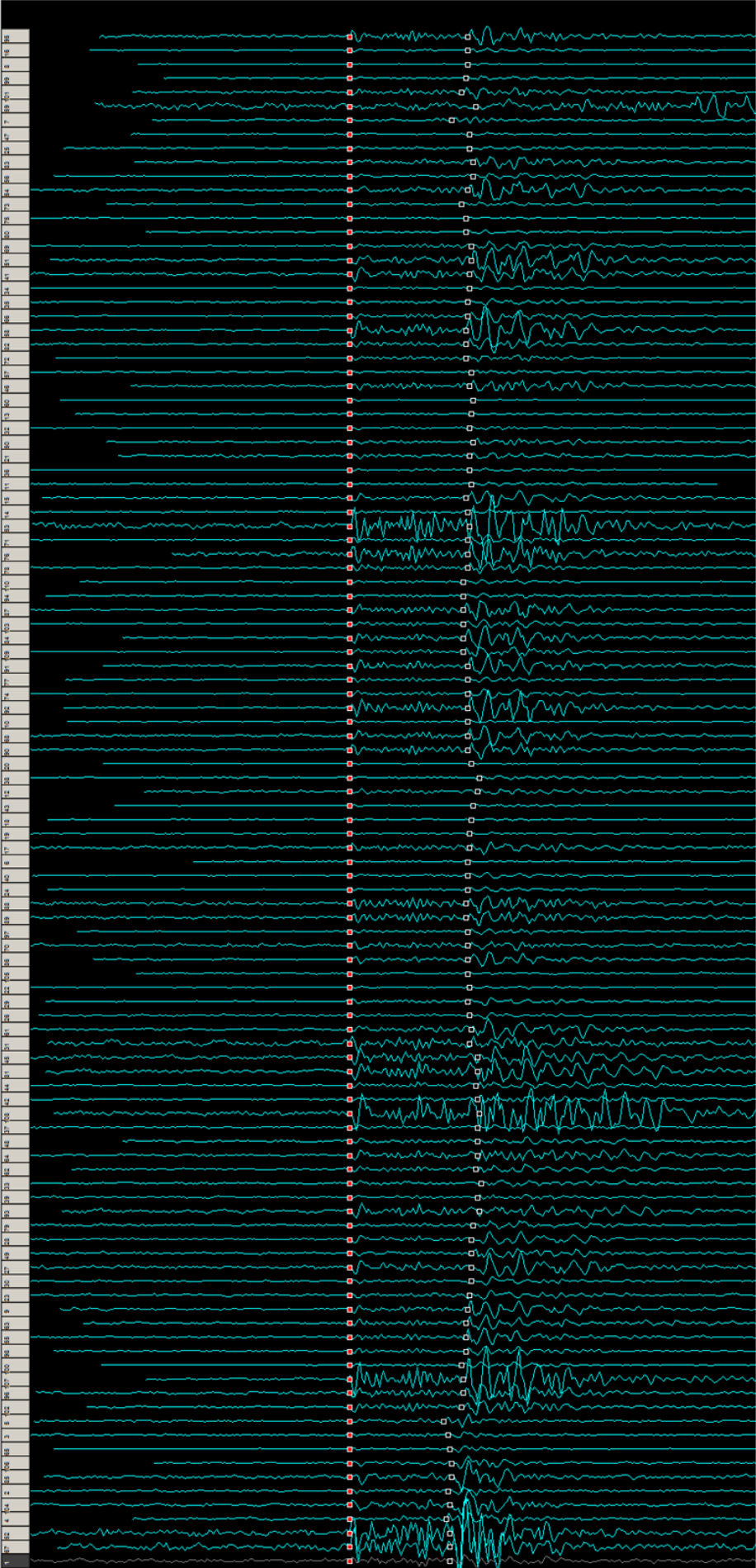The key components of the Microseisgram core include:
- A fully specified relational database provides the foundation for the software
- Multi format data reading, including SEG, SUDS, SEED, SEEDlink and SAC
- Seismogram viewing and analysis, incorporating user-specified pre-processing templates
- Viewing of vendor picks & hodograms
- Multiple picking modes, allowing rapid array-based picking or detailed waveform analysis
- Event location using either a 1D linear array (eg frac mapping) or any 3D array geometry
- Guided auto-picking and event locations through trace migration analysis
- Source parameter analysis, including Moment (Mw), Local (ML) and Duration (MD) Magnitude
- Covariance (linearized) or Monte Carlo (non-linear) error ellipsoids
- Focal mechanism analysis using double-couple fault plane solutions or Moment Tensor (MT)
- 3D viewing of events, velocity models, travel-time grids, error ellipsoids, wells & surfaces
- Enhanced 3D visualization including, location misfit, semblance, raypaths and beach-balls
- Graphical tools for import and editing of 3D velocity models
- Import and triangulation of 3D surfaces
- Production of 3D animations
- Interactive link between the 3DViewer, event Catalogue and waveform display
- Trace rotation (raw, geographic & radial/transverse components to ray path)
- Receiver-Gather analysis with pick alignment, multiplet-analysis and cross correlation
- Velocity model building, including horizontal and dipping layers, full 3D and anisotropic (VTI)
- Interactive velocity model editing through click-and-drag adjustments
- Scripting and batch-mode for automating processing sequences
- Event detection/re-triggering allowing experiment replay using different trigger criteria
- Data import and database building wizard
- Diagnostics and 2D plotting module including time-history, scatter, histogram & contour plots
- Waveform truncation and SEG2-M data export
